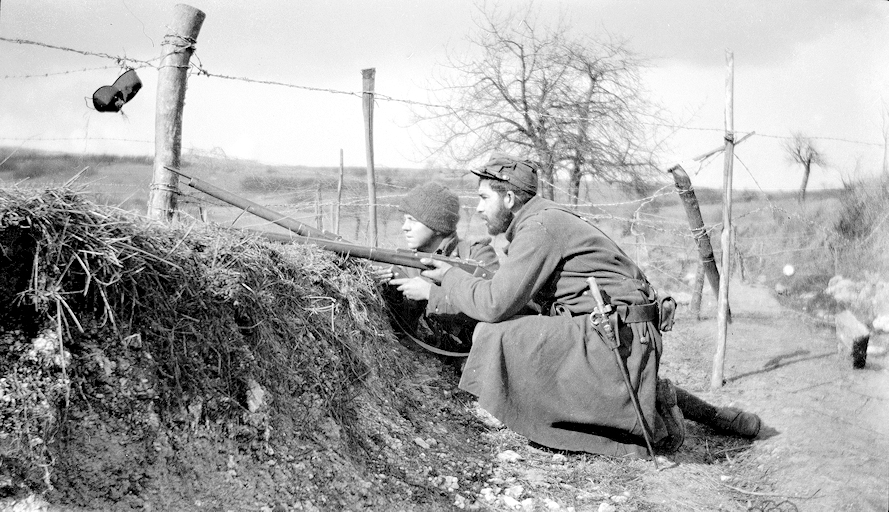
Barbed wire was strung in front of the trenches (or in this photo, a firing position from a sunken road) to slow down attacking enemy troops. Tin cans and other metal objects were often hung from the wire to make noise if an enemy raiding party tried to cut or slip under the wire at night. As with the entire trench system, barbed wire entanglements got much thicker and more intimidating as the war progressed, often becoming multiple belts of coiled wire tens of yards deep. In this photo American volunteers Fred Zinn (foreground) and David King keep watch behind an early barbed wire obstacle near Craonnelle. (Photo courtesy of Washington & Lee University.)